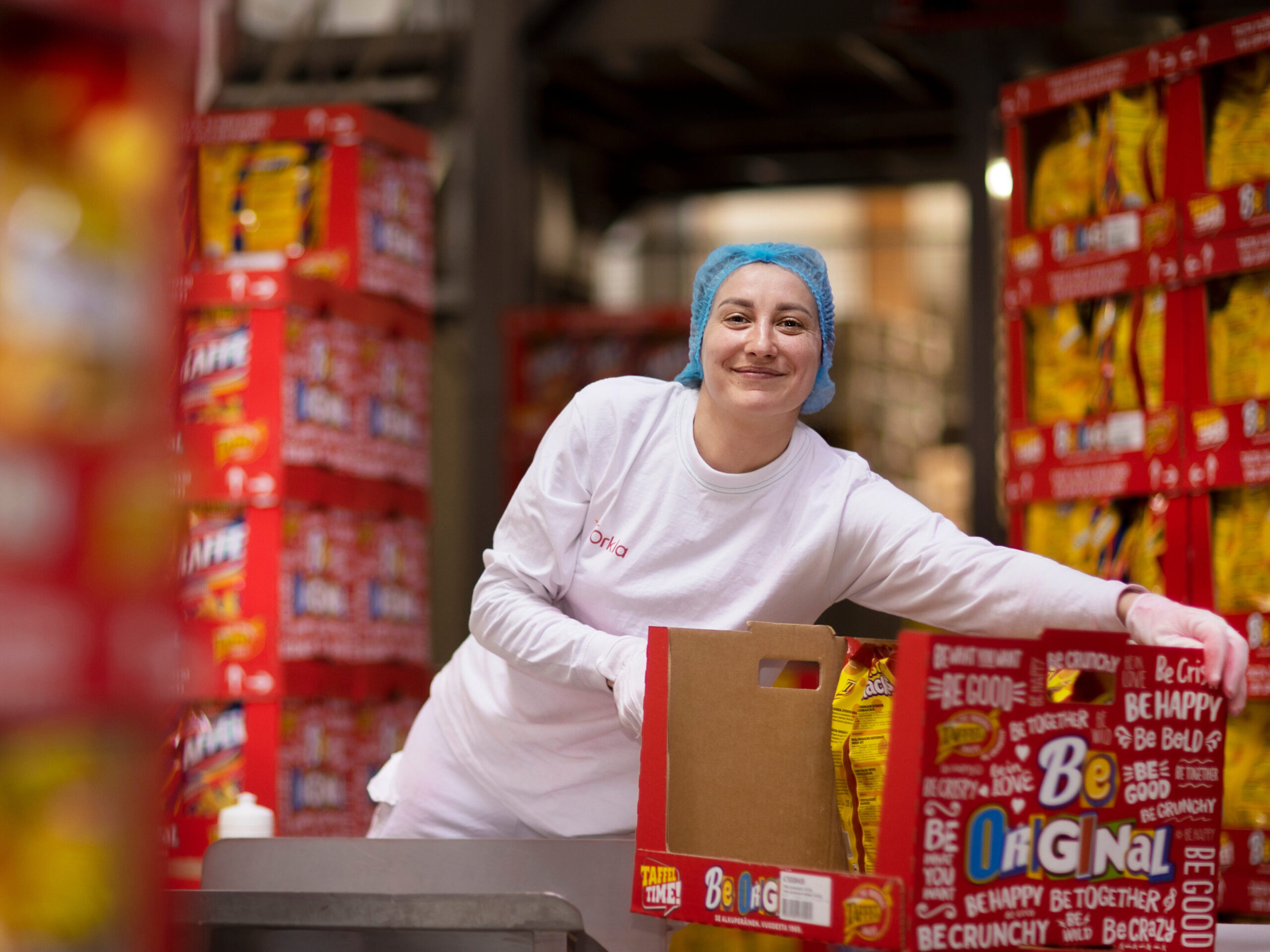

Taffel for a more sustainable tomorrow!
Taffel snacks create moments of relaxation even in the most monotonous day and bring a lot of joy to gatherings! We offer the pleasure of great taste and are dedicated to ensuring that Taffel friends can consume snacks as responsibly as possible.
Taffel chips come from two factories – Ādaž in Latvia and Åland in Finland.
The long history of Taffel factories has taught us to produce snacks with high quality and efficiency. Sustainability is also important to us. Taffel brand belongs to the Orkla group, for whom the sustainability of business operations is extremely important. We are constantly working to offer more and more sustainable choices to the consumers of our brands.
Climate impact
Did you know that the food industry contributes nearly one-third of all global greenhouse gas emissions? We display the climate impact of each product so you can make more informed food choices and support efforts to slow global climate change. Each of us can make a difference!
We use the cradle-to-gate method to calculate climate impact. This means we add up the impacts of raw materials, packaging, transport to the factory and production processes but do not include any activities after the product leaves the factory.
Based on calculations, we know that the greatest impact is not from packaging or production but from raw materials.
We know that a diet that ensures both human and environmental health is possible. In addition to monitoring the climate impact of consumed food, it is also essential to avoid food waste.
Our calculation method and threshold for small climate impact were developed with the assistance of the Swedish research institute RISE. Our assessment scale considers the following:
- the climate impact of an average Nordic citizen’s food consumption (approx. 2 tonnes CO2e per year);
- reasonable daily food consumption (approx. 1.3 kg);
- the need to reduce global climate emissions by 50% compared to 1990 levels to constrain global warming to 1.5°C above pre-industrial levels by the end of the century.
Frequently asked questions
How do you ensure a product has a small climate impact?
We developed the methodology for calculating climate impact and the threshold for small climate impact with the assistance of the Swedish research institute RISE. Preferring small climate impact (<2.1 kg CO2e/kg) foods, while maintaining a reasonable level of daily food consumption (approx. 1.3 kg per person), we could reduce emissions from food by 50%. This aligns with the global goal to reduce climate emissions by 50% by the year 2030 (compared to 1990 levels).
Do you only evaluate climate impact, or do you also consider broader environmental aspects like water usage and biodiversity?
Our assessment scale and methodology focus on climate impact. However, in our work with raw materials, packaging, production processes and product development, we also consider other environmental aspects, but describing them all on a single scale would be too complex.
What is product climate impact?
The climate impact of a product indicates the amount of greenhouse gases, or climate emissions, released into the atmosphere as a result of the particular product. These gases affect the climate by trapping outgoing solar radiation, thus warming the Earth. Different products have varying types and amounts of greenhouse gases released into the atmosphere. Therefore, the climate impact of products varies. Product climate impact is described in terms of carbon dioxide equivalents (CO2e), representing the amount of carbon dioxide that would have the same warming effect as all the greenhouse gases associated with the product.
Where do you get information about the climate impact of your products, and who has reviewed your methodology?
We calculate the climate impact by considering the combined effects of raw materials, packaging, transport to the factory and the production process while not considering activities carried out after the product leaves the factory. Our assessment scale and methodology were developed in collaboration with the Swedish research institute RISE; the same methodology is used across the entire Orkla Group in various countries.
Shouldn’t products with a large climate impact be avoided? Why do you continue to produce them?
A sustainable diet doesn’t necessarily mean exclusively consuming products with a small climate impact. It’s essential to ensure that food provides an adequate amount of nutrients for good health. Balancing nutrition and sustainability is crucial for both human and environmental well-being.
How can smoothies packaged in small plastic containers and containing exotic fruits like mango or banana have a small climate impact?
To calculate the climate impact of products, we consider the combined impact of raw materials, packaging, transport to the factory and the production process of the final product. Our calculations show that raw materials primarily drive the climate impact, while the impact of packaging and transport is generally smaller. Since smoothies are mainly plant-based and have large water content, their climate impact is below 2.1 kg CO2e per kg of product, which is considered the threshold for products with a small climate impact.
Why do you assess all your products on the same scale?
We use the same scale to facilitate comparisons of the climate impact of different products across categories. If we used category-specific scales, we wouldn’t gain a broader understanding of which categories have a smaller climate impact overall.
How can you compare the climate impact of products from different manufacturers?
We’ve only conducted calculations for our own products, as we have the necessary data for them. In our calculations, we’ve observed that raw materials tend to be the main source of impact. Based on our findings, we can infer that products with similar compositions have similar climate impacts. Generally, the more plant-based a product is and the less animal-based it is, the smaller its climate impact, using certified raw materials can also reduce environmental risks. For example, Rainforest Alliance-certified cocoa helps to better address potential environmental risks associated with raw material cultivation, such as deforestation.
When will Orkla sell only products with a small climate impact?
We currently do not have a specific plan in place to exclusively sell products with small climate impact. However, we are committed to ensuring that all our products are produced as sustainably as possible. This can be achieved through collaboration with our raw material suppliers, product and packaging development, and improving the efficiency of our manufacturing processes. At the same time, our diet must provide us with enough nutrients to stay healthy. Striving to meet consumer expectations, we also aim to operate within the planet’s ecological boundaries.
Why do you display a range rather than showing the exact climate impact figure?
While our calculations provide precise numerical values, we opt not to display them due to slight inaccuracies inherent in climate impact assessments. For example, the precise climate impact of raw materials depends on factors like climatic conditions and soil quality. Factors such as batch size and raw material characteristics influence the production process, and transportation impact depends on the type of fuel used. These variables, subject to change over time, contribute to a certain degree of fluctuation in climate impact. Therefore, we believe it is more informative to provide a range indicating whether the climate impact is small, medium or large, rather than displaying a single exact value.
Does Estonians’ diet have a large climate impact?
There are no precise studies or data available regarding the environmental impact of Estonian diets. Therefore, our assessment thresholds (small, medium and large) are based on the average climate impact of Nordic diets. Generally, the environmental impact per capita of diets in low-income countries is smaller than in high-income countries. Additionally, developed countries tend to have more food waste at the consumer level, making their food systems less sustainable. Regardless of comparisons with others, it’s essential for individuals to understand that their diets have an environmental impact that can be influenced through informed choices.
Did you also consider food wastage when developing your assessment scale?
We began with the average climate impact of food consumed by the average Nordic person, regardless of whether it ends up being eaten or discarded. To meet the climate goals for 2030, this impact must be halved. This would ensure that the food system contributes to reducing emissions in line with other sectors, allowing us to limit global warming to 1.5°C by the end of the century compared to pre-industrial levels. The assessment thresholds are determined by considering a sensible daily food intake per person and establishing the climate impact per kilogram of food required to meet our climate objectives. This calculation does not account for additional food waste. Therefore, while preferring products with low climate impact is one step towards a more climate-friendly diet, it is equally important to minimise food waste. Our calculations also factor in wastage occurring during raw material cultivation and production processes, which we continually strive to reduce to decrease product climate impact.
Shouldn’t you also measure your products’ impact on health, alongside environmental impact?
We openly share information about the nutritional value and ingredients of our products (including on the product packaging) to enable consumers to make informed choices. The healthiness of food cannot be easily measured with a single metric. It is often said that there are no inherently healthy or unhealthy foods, but rather healthy or unhealthy diets; seemingly healthy food choices can turn out to be overall unbalanced or unhealthy. The key is balance and variety in diet. The principles of a health-supporting diet can be found on the website of the Estonian National Institute for Health Development at toitumine.ee, which we recommend following.
Why isn’t the “small/medium/large” rating displayed for beverages?
The scale was developed based on the average Nordic diet. To provide a more relevant comparison, all beverages (including milk, coffee, tea, juice, soft drinks and alcoholic beverages) were excluded from the analysis. Therefore, we do not provide a rating for beverages. However, we can still express their climate impact since the calculation methodology remains the same. Just like with foods, we can calculate the combined impact of raw materials, packaging, transport to the factory and the production process at the factory for beverages.
Nutrition and wellbeing
Allergies and intolerances
In order to preserve food choices for people suffering from allergies and food intolerances, we avoid bringing new allergens into our factories. Even microscopic contact with an allergen can be dangerous for an allergy sufferer. If ingredients containing allergens are not used in the composition of the product itself, but they have been used in another product on the same production equipment, we ensure that the relevant information is available to the consumer and is easy to find. In accordance with current legislation, the allergens contained in the product are highlighted on the packaging using a different font. Allergens that the product may contain through contact with other products, devices, etc., are highlighted at the end of the list of ingredients with the hazard notice “may contain traces of”.
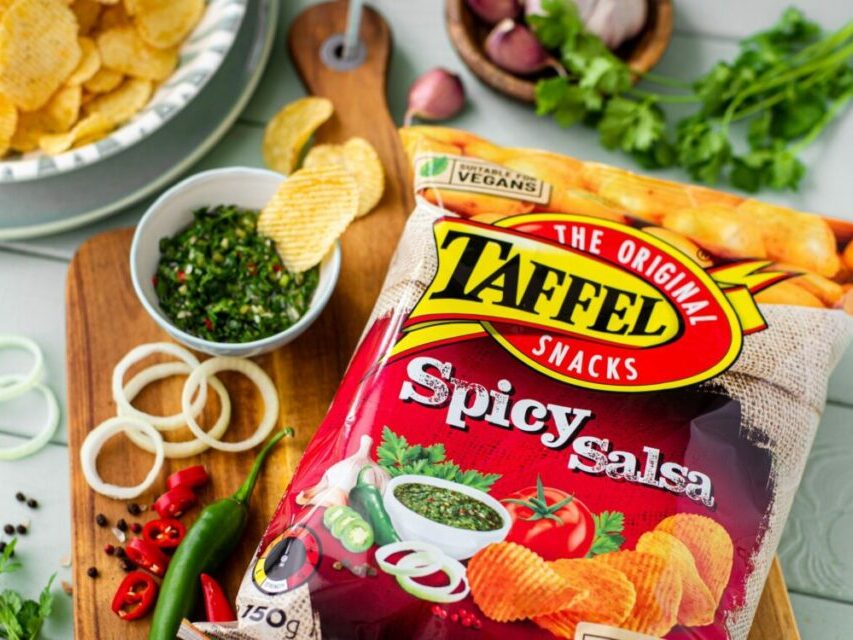

Composition of products
Taffel’s goal is to offer delicious snacks to Estonian consumers, but we also work to improve the composition of our products. We try to create new chips recipes with a moderate level of salt. In addition, we develop products with less fat than average. Taffel Broadway Less-Fat chips have 36% less fat than regular Taffel potato chips.
Vegan products and vegetarian food
When developing new snacks, we always consider the possibility of developing them suitable for vegans or vegetarians, because plant-based or low-meat food has less impact on the environment.
Quality of products
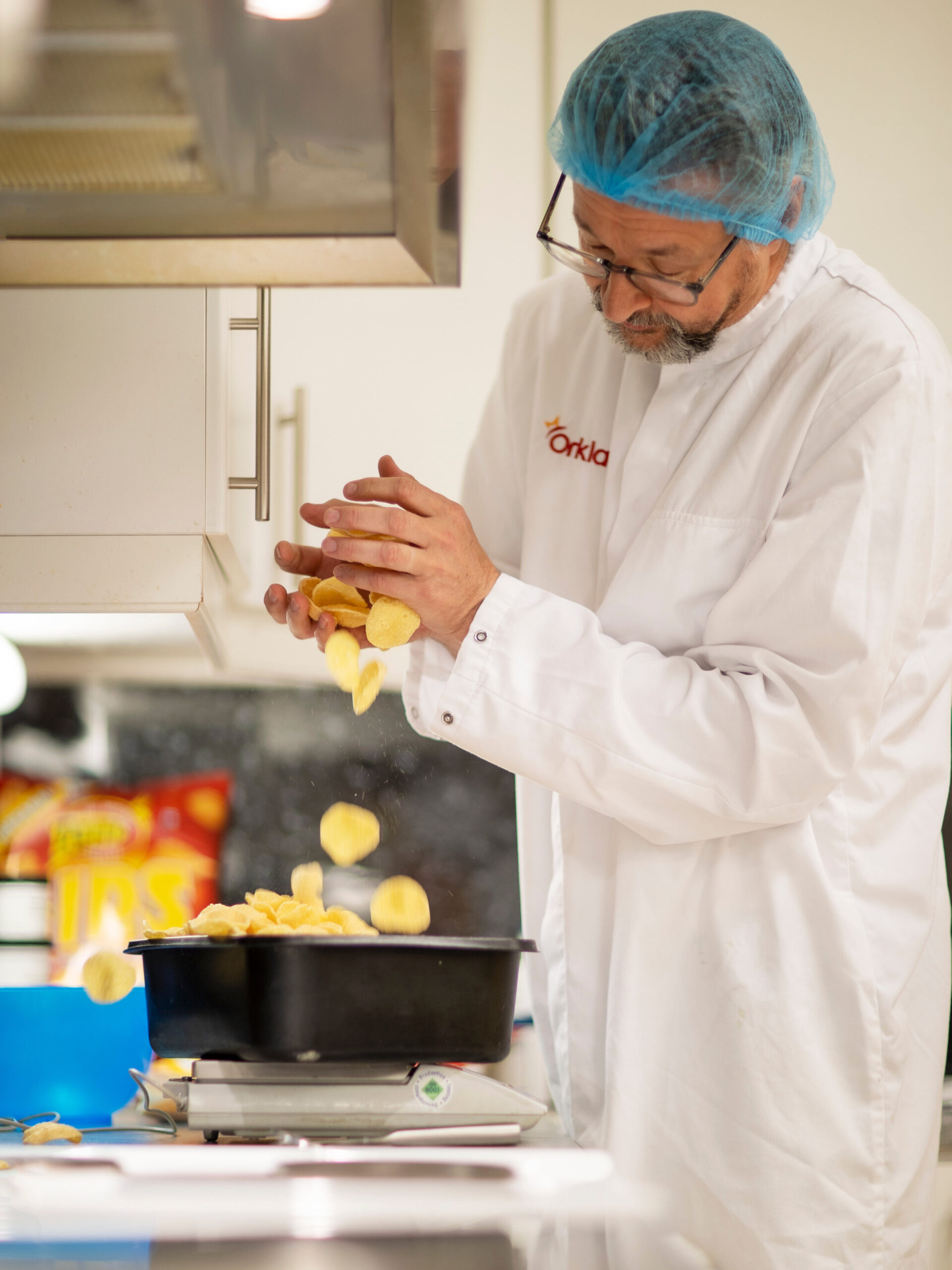

We take the topic of high-quality and safe food very seriously. The growers, producers and suppliers of our raw materials must comply with Orkla’s strict requirements.
Orkla’s guidelines ensure the safe use of ingredients, packaging, and end products. Our food safety is based on the Orkla Food Safety Standard (OFSS) and all our production facilities are regularly inspected based on these strict requirements. According to OFSS audits, Taffel Ādaž and Åland chips factories have been in the highest “green” category for several years.
Packaging and raw materials
Packaging
Quality packaging plays an important role in ensuring the quality and taste of potato chips and other salty snacks. Recycling of packaging, which reduces the negative impact of waste on the environment and saves resources, is also important.
All packages of Taffel chips are made of the same type of plastic (polypropylene), i.e. mono-material. This means they can be recycled as a material. If you put the empty package in the packaging container, then we have created a prerequisite for the waste handler to send them to recycling. This way we reduce the need to extract new raw materials from the nature.
In order to maintain a clean environment and collect packaging, Orkla Eesti AS is one of the members of the Estonian Recycling Organization (ETO). Through ETO, we are one of the shareholders of RP Pakend OÜ. This non-profit company collects, sorts, valorises and resells packaging waste for recycling. For this purpose, packaging containers have been installed at public collection points where you can take your packaging, which will be collected, sorted and later recycled.
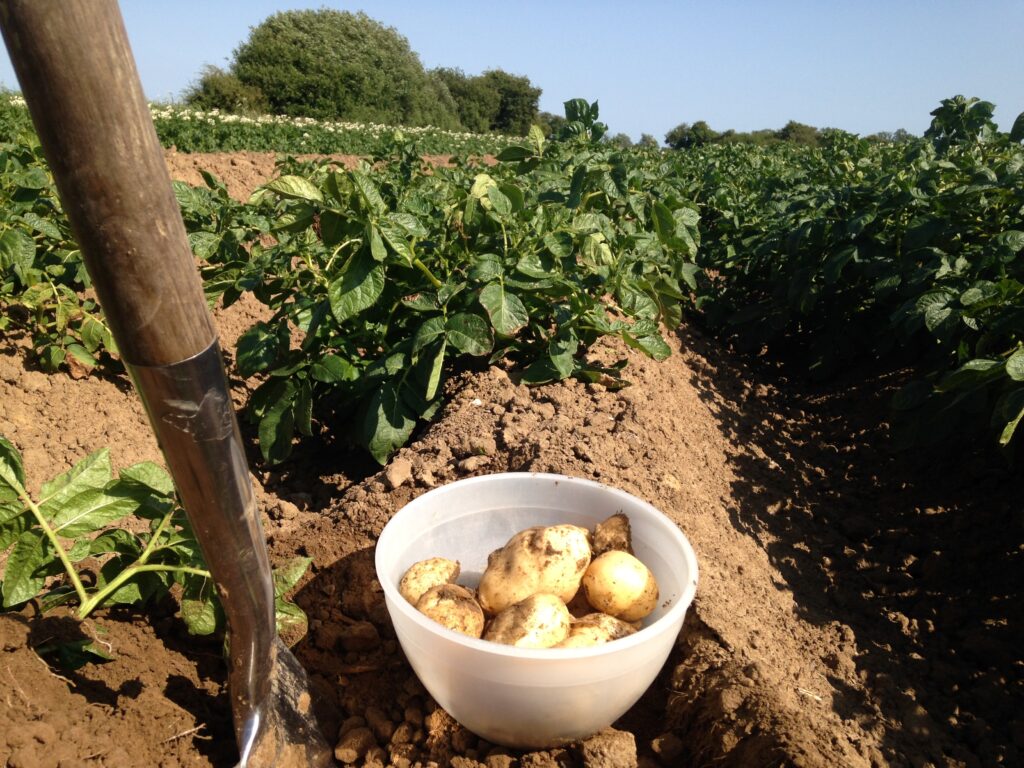

Raw materials
Potatoes are the most important raw material in potato chips, but oil also plays an important role.
The potatoes used in our factories are of high quality and mostly come from Estonia, Finland, Latvia, and Lithuania. The Ādaž factory also uses a sustainability standard – the potatoes there have an ISCC certificate (International Sustainability and Carbon Footprint Certification).
Good oil ensures a unique and pleasant taste and consistent quality in snacks. We use sunflower and rapeseed oil in Taffel snacks.
The environment
Leftovers gain new life
Through by-products we give a new life to the waste that naturally occurs in the production process:
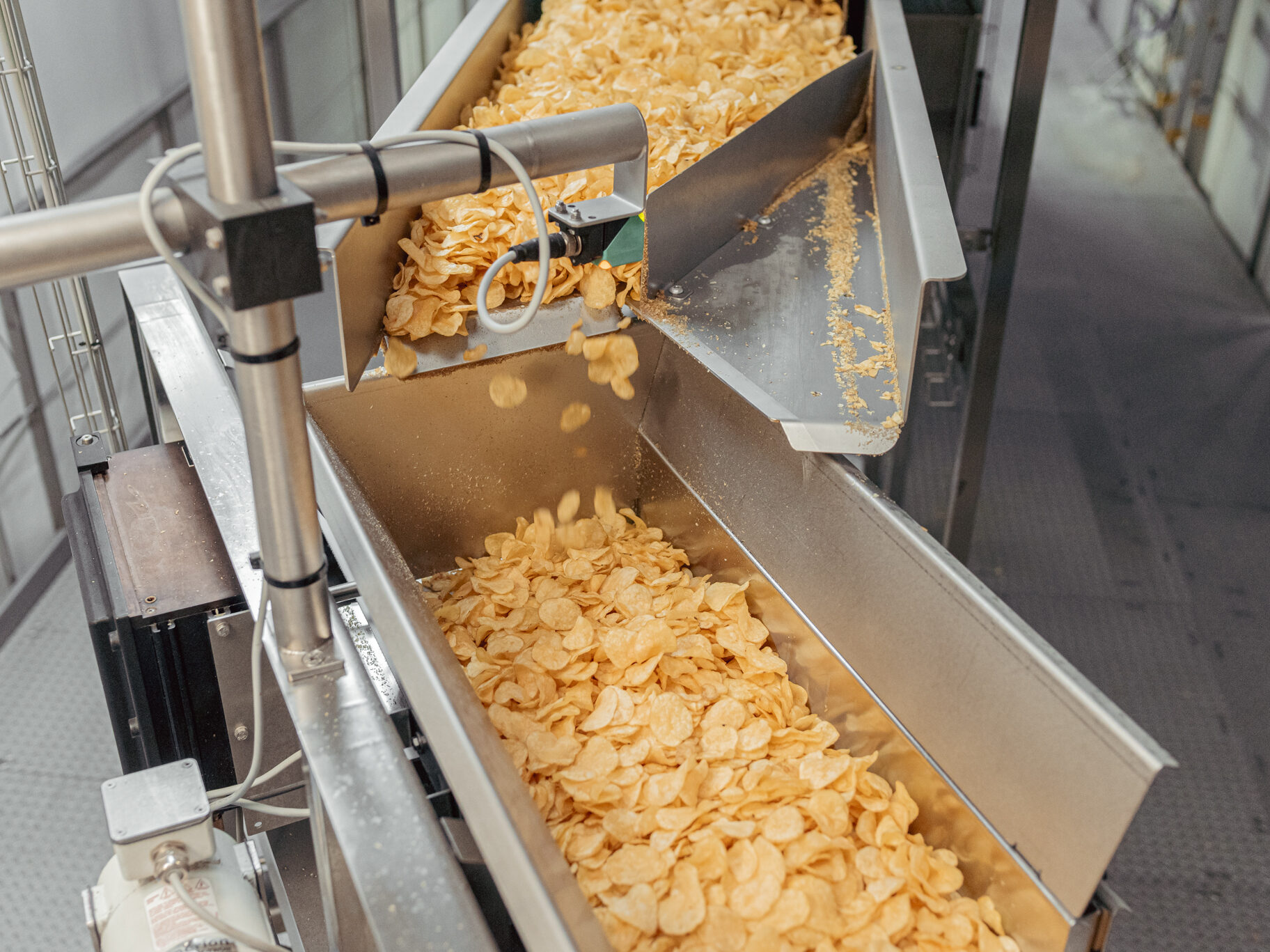

- The separated potato starch is converted into store-bought potato starch or the residue goes into biogas production;
- Small or damaged potatoes unsuitable for production become feed for wild animals and domestic pigs;
- Biogas is also produced from potato production residues;
- Biodiesel is produced from the oil used in the Ādaž factory;
- Salt saved in production is fed to zoo animals who need additional salt in their diet. Also, the surplus of salt is used for road maintenance in the winter;
- Taffel also has its own water treatment plant in Finland. Once the used water is purified, it can be reused for washing unpeeled potatoes. About 10-15% of the water used in the Åland plant is recycled. The aim in the future is to use the water after purification for agricultural irrigation.
People and society
We employ many people and take the well-being of our employees very seriously. We are responsible for their health and safety and ensure that all human rights are respected, including freedom of expression, freedom of organization and the right to fair working conditions. We conduct comprehensive employee satisfaction surveys and, based on the results, prepare action plans to alleviate areas of concern. Every year, we make big investments in the development of our employees’ professional knowledge, occupational safety, and management skills. We consider it important to create a psychologically safe working environment, which is why we train employees to build good mutual relationships, effectively resolve conflicts arising in the working environment and prevent workplace bullying.
We support society with projects, sponsorship, and charity. For many years, Orkla Eesti has provided support to many projects and events in various fields. The Taffel brand has repeatedly supported music and cultural events as well as youth sports.
